Dental implants and how they work
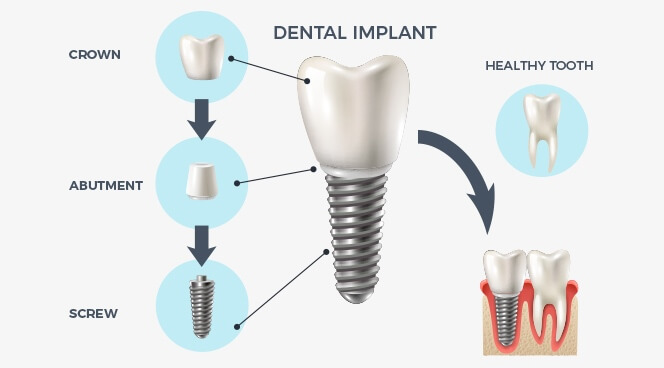

A dental implant is a titanium screw that is inserted into the jawbone to form a foundation for replacing a missing tooth. In general, a dental implant acts as a “root” or an “anchor” for placing of an artificial tooth. After placement of an implant in the jawbone, usually it takes three to six months for the implant to become well integrated with the bone. Once the implant is firmly attached, an artificial customised crown is fitted on top of the implant.
Digital guided implants
Dr Chintan has gone through extensive training in implant dentistry, and has brought cutting-edge computer-guided implant placement to The Smile Workx. In the traditional method, first we have to make an incision through the gum, then raise the gum, expose the jawbone, and detect the site of the implant placement. After drilling into the bone and placing the implant, the gums are closed with a suture (stitch). In short, it ends up as a minor surgical procedure.
So how would you feel if the same implant could be placed without cutting and stitching the gums? Well, we are already doing this at The Smile Workx! Here are some major advantages of digital guided implant surgery over traditional implant surgery:

- No incision
- No sutures (stitches)
- Reduced time of procedure
- Fast recovery
- Minimally invasive, so minimal swelling and discomfort
- Less chance of infection
- Precise and predictable placement of the implant, so reduced risk of complications
With digital guided surgery, you can even go to back to your work immediately afterwards.
Advantages over removable dentures and bridges
- Comfortable. No hassle of taking out and putting back in
- Secure. Unlike a partial removable denture, an implant is firmly secured into the jawbone
- Reproduce the form and function of missing teeth without affecting adjacent teeth
- Similar to a natural tooth, so easy to get used to it without affecting your lifestyle
- No grinding of adjacent teeth required
- Easy to clean compared to a bridge
- Preserves the height of the jawbone
- A predictable and long-term solution
Implant-supported crowns and bridges
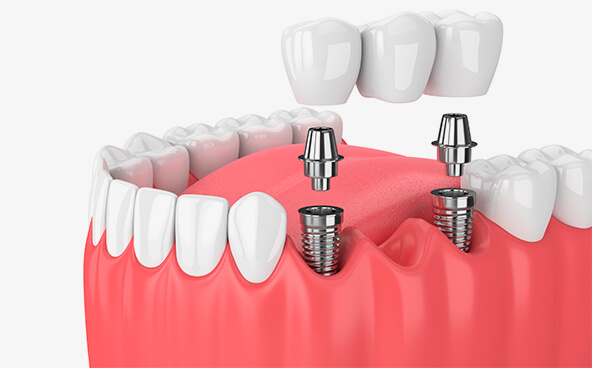
Just like traditional crowns and bridges, multiple missing teeth can also be replaced by using implant-supported crowns and bridges. The principle is the same, except instead of using natural teeth for support, implants are placed and used as a support.
Indications
When two or more teeth in a row are missing and a traditional bridge is not an option or a removable partial denture not possible, an implant-supported bridge may be the answer. In fact, if the jawbone is adequate for an implant, this option is considered as a superior option compared to a traditional bridge or a partial denture.
Is it expensive?
When the cost of this treatment is compared to other options, it may look expensive. The benefits, including long-term predictability and the conservative/preventive approach (no damage to the adjacent teeth) outweigh the cost involved, though.
Speak with Dr Chintan to inquire more about this option.
Implant-supported dentures
Are you sick of having an ill-fitting denture that rubs and is no use for chewing or eating? Are you always afraid of losing your denture and facing an embarrassing situation? Did you know that an implant-supported denture can fix all of these issues and make your life much easier?
What is an implant-supported denture?
When a traditional denture is modified to fit onto implants, it is called an implant-supported denture.
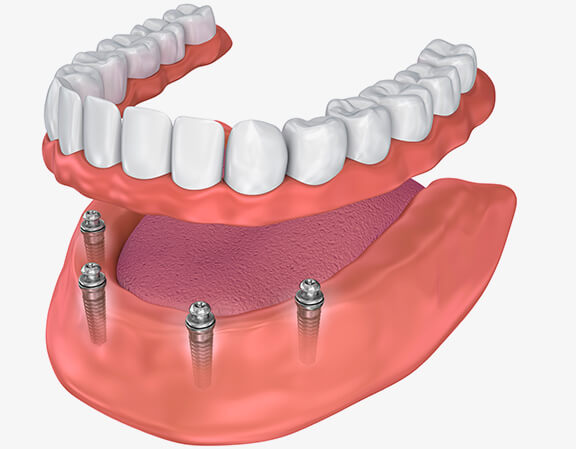
How does it work?
First Dr Chintan needs to assess the quality and quantity of the bone to see whether implant placement is feasible.
According to the size or length of the jawbone, the size and number of implants are selected.
Usually, the lower jaw needs two to four implants, and the upper jaw needs four to six implants.
Three to six months after the implants are placed, the denture-making process starts The denture is fabricated with provision for precision attachments that click onto the implants. These attachments are the key factors in holding the denture securely in its position.
How is it cared for?
Easy! You can remove the denture at your will and clean it just like a traditional denture.
The only additional step is to keep the implant clean with gentle brushing and rinsing. And that’s it!
An implant-supported denture is an investment with a lifetime high return.
Des: Implant-supported fixed bridge
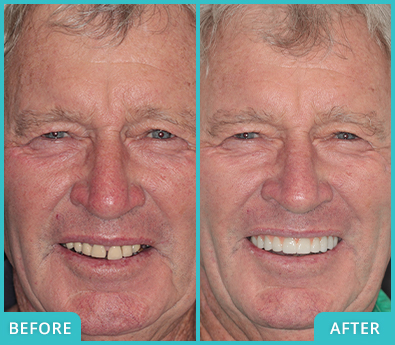
- Patient's main concern:
- Des wanted to replace his missing teeth and was not happy with his smile but was adamant about not wanting a partial denture. His situation was further complicated by infections in multiple teeth.
- Treatment:
- The chosen treatment strategy for Des involved removing all of his teeth and an implant-supported fixed bridge treatment.
- Treatment time:
- The treatment was conducted over a period of 9 months.
- Results:
- With a complete smile and resolved infections, Des enjoys improved oral health and a restored dental structure. This enhances his comfort and confidence with a brand new smile, exciting him for his new life.
Lesley: Implant-supported fixed bridge
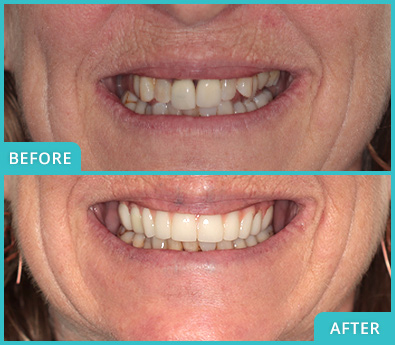
- Patient's main concern:
- Lesley was struggling with multiple loose teeth on her upper jaw, which posed serious inconvenience and discomfort.
- Treatment:
- The treatment followed was a two-fold process: implant-supported fixed bridge and a full mouth restoration focusing on the top arch only.
- Treatment time:
- The entire treatment process spanned over a period of 13 months.
- Results:
- Lesley no longer has to deal with the instability of mobile teeth. Now, she can confidently smile, speak, and eat without worry or discomfort.
Payment Plans Available





